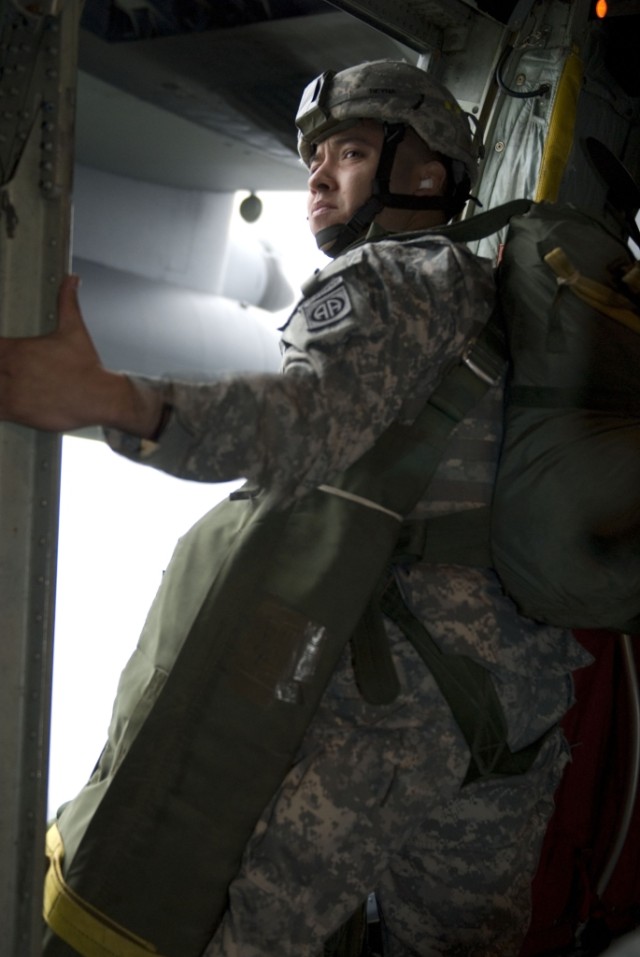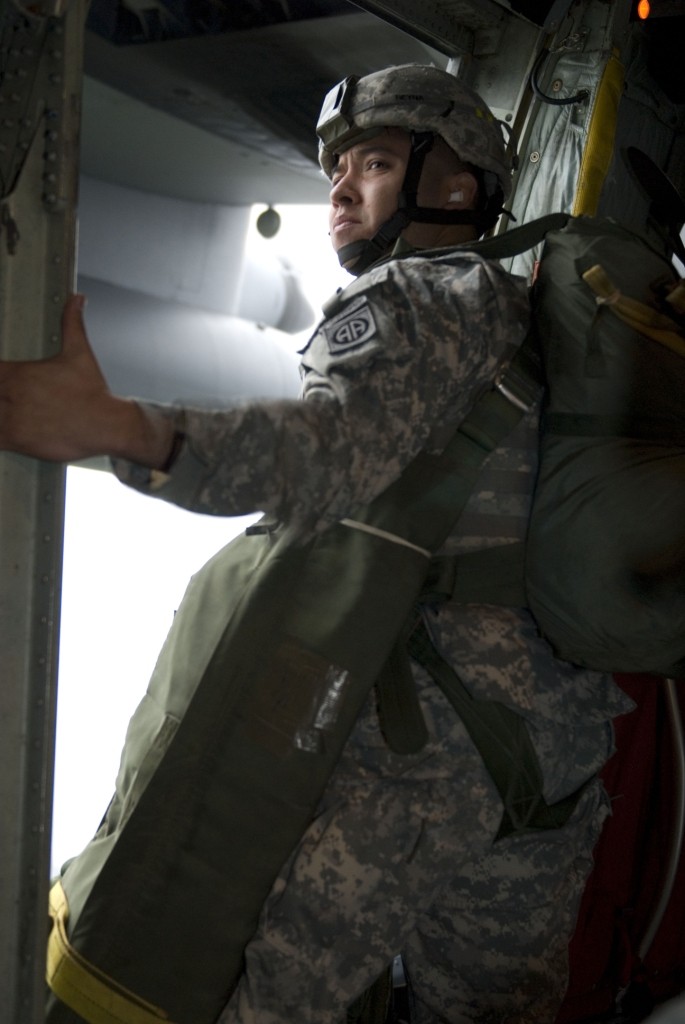FORT BRAGG, N.C. - As America's only airborne capable corps, the XVIII Airborne Corps acts as the nation's rapid response force for any strategic contingency providing combat power for full-spectrum operations. To test this capability, more than 2,200 Soldiers and Airmen descended on Fort Bragg for a joint forcible entry exercise Oct. 27 to Friday.
"We recognize the value that having an airborne forcible entry capability provides to the nation, and view it as our top priority to sustain that capability," said Col. Greg Kane, director of operations, XVIII Abn. Corps.
Kane described the complexity of joint operations and the need to practice the skills needed to integrate air and ground operations as well as importance of developing a mutual understanding of the critical activities.
"The JFEX is extremely complex. Being able to bring together disparate air and ground organizations, inserting an airborne task force brigade or larger in size, sustain that force on the ground and defend that force by using joint fires is very complex," said Kane.
"The only way we can sustain this complex operation is to continually exercise it and the JFEX is one way in which we can do this."
Although much of the focus of the exercise was on the multiple jumps and follow-on ground operations, the JFEX actually began Oct. 22 with an alert message to the 2nd Brigade Combat Team, 82nd Abn. Division and global response force, as well as other participating units to execute out-load portions of the GRF in response to a notional scenario that required a forcible entry operation.
After several days of personnel and equipment preparation, rehearsals and a 24-hour weather delay, 1,250 paratroopers finally jumped through blackened skies into a mythical country to seize a flight landing strip that would be used to support follow-on airland operations. The 2nd BCT Soldiers then moved quickly to secure a number of objectives to include a critical dam that hostile forces had threatened to breach.
Once the objectives were secured and the area cleared of hostile forces, 2nd BCT Soldiers returned the areas to the host nation government.
"The corps has the responsibility to provide command and control capability, not only to counterinsurgency, but also full-spectrum, high-intensity operations, so we change up the scenario so we are exercising all of our capabilities and not just what we have done the past six or seven years in Iraq and Afghanistan," said Kane.
Kane said that because the corps has been out of the business of doing forcible entry over the past six years because of its involvement in Iraq and Afghanistan, it had to rebuild this capability.
"That is the reason why we are going through this exercise," said Kane.
"This exercise is designed to stress all of the deployment support nodes that would facilitate pushing a battalion or larger force out of here," he added.
"The JFEX gives us the opportunity to hone our skills away from home station in a complex scenario. It also allows mobility units to get joint employment experience with actual loads of paratroopers, linking our airdrop and airland mission sets," said Col. Dave Kasberg, commander 19th Operations Group, of Little Rock, Ark.
Kasberg said the joint interaction at all levels and airland/airdrop missions with actual loads was the most important benefit of the exercise.
"Our planners worked with Army planners for two months to ensure proper link up between the operators, logisticians, and intelligence personnel," he said.
This is the third JFEX that the corps headquarters has participated in since returning from Iraq in April.
"This has been a great learning event for us and we will capture a lot of our lessons learned from this exercise and will integrate them into our next exercise in January 2010," Kane said.
Prior to the jump, more than a dozen community leaders, to include Miss North Carolina, had the chance to meet with Soldiers, observe airborne operations, as well as don T-10 parachutes.
Kane said it is important to educate our community leaders.
"We use these exercises as a way of reaching out to community leaders to let them know what we do and how we do it," said Kane. "The public has been phenomenally supportive of the military especially since 9-11."


Social Sharing